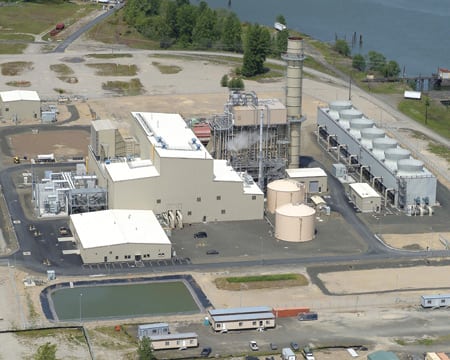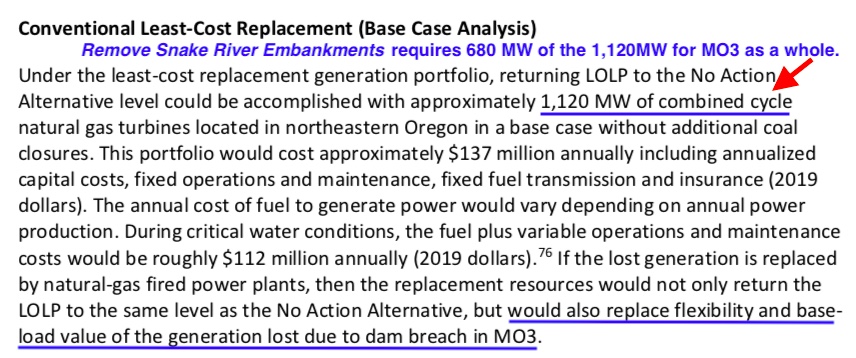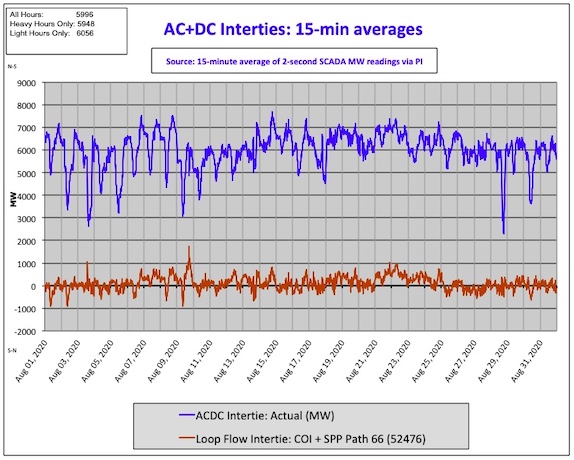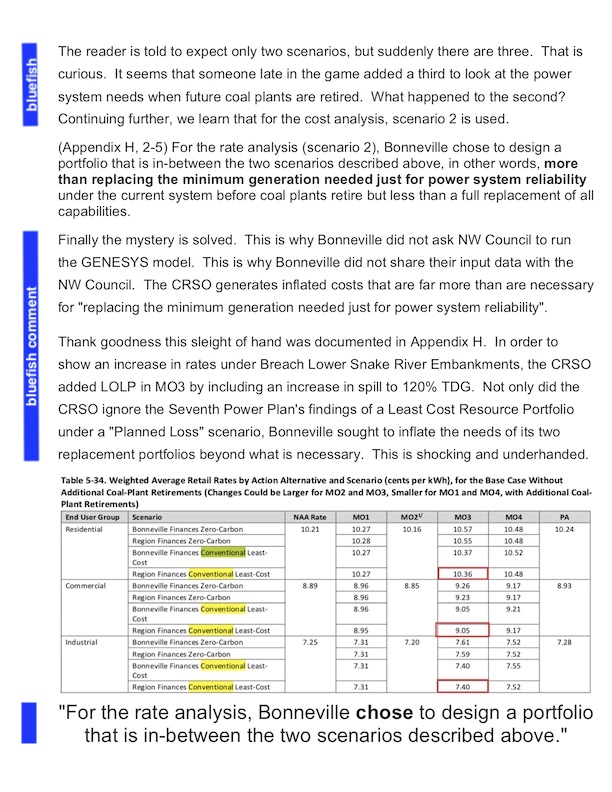Columbia River System Operations
Comment & Response
of bluefish.org
Cover Letter
----------------------------
Conservation
Coal
Carbon Sequestration
----------------------------
Irrigation
Barging Wheat
Barging Salmon and Steelhead
----------------------------
Survival of Salmon and Steelhead
Juvenile Survival through Hydrosystem
Water Temperature
Predation by Birds
Ocean Conditions
----------------------------
Greenhouse Gases
An Adequate Power Supply
An Economic Power Supply
A Reliable Power Supply
An Efficient Power Supply
----------------------------
Potatoes, Apples & Grapes
Petroleum to Pasco
----------------------------
Orca and Idaho's Chinook
Flex Spill to 125% TDG
Breach Lower Snake River Embankments
----------------------------
Social Effects
Cultural Resources
Environmental Justice
----------------------------
Conclusion

Federal Response:
For the Base Case, the EIS assumed that half of the installed solar (2,550 MW in the Draft EIS) in MO3 would need to be accompanied by battery storage to provide sustained power during longer events without sufficient solar generation without leaning on or overloading existing regional capacity to integrate these renewables. The value was used as a proxy for the estimated amount of capacity needed to support new renewable integration in light of the loss of the four lower Snake River dams and potential future restrictions of available capacity due to increased retirement of coal capacity.
The commenter appears to question the need for this additional capacity in MO3 if the objective is to only return regional reliability to the No Action Alternative level. The need for resource capacity to integrate renewable resources is well established and discussed at length in the EIS. In the Draft EIS please see Section 3.7.3.5, Potential Replacement Resources And Associated Costs, at pages 3-904-905; Table 3-160; and, Section 3.7.3.1, Integration Services, page 3-832.
Solar resources are not dispatchable, and demand response resources hold promise, but are arguably not mature enough within the Northwest to replace the lost flexibility of the Federal Columbia River Power System (FCRPS) under a dam breach scenario. Therefore, additional resource costs associated with additional storage which might be necessary to meet load and resource variability at time steps smaller than monthly-diurnal increments, was included as a proxy for the value of lost flexibility, such as sustained peaking and ramping capability.
While the EIS use of this proxy is an accurate reflection of true missing costs under this scenario, the co-lead agencies, in response to public comments, updated the amount of the solar plus batteries replacement under the MO3 scenario framework in the analysis in the Final EIS in Section 3.7.3.5.
bluefish counter response:

CRSO respondents have misread my comment's intention: The bluefish comment did not "question the need for this additional capacity in MO3". My objective was to bring to the forefront, informative text deep within the 8,000-page Draft EIS (Appendix D) that was not highlighted or even mentioned in the CRSO Executive Summary.
Nonplussed, I do agree with the CRSO respondent's long-winded response to my comments (above). Using solar power to replace the ramping capabilities of the LSR dams is not possible without energy storage, be it gravity, chemical or compressed-air storage. Each of these are currently more expensive than relying on the tried and true. Rightfully, the conventional Resource Replacement Portfolio for MO3, chooses combined cycle combustion turbines (CCCT) as a reasonable solution (see two photos to right).
Following the CRSO analysis, modern CCCT power plants would be added to the grid. Another approach, less expensive and quite feasible according to the NW Council's Seventh Power Plan, would be to make Market Purchases and Reduce Electricity Exports while relying upon existing CCCT power plants to provide adequacy and reliability to the grid when power demand and power prices dictate (see An Economic Power Supply of this web series for more).
With a much smaller footprint -- both physically and ecologically -- two CCCT power plants similar to Avistas' 399MW Port Westward and PGE's 287MW Coyote Springs (upper and lower photos, respectively) is all that is necessary as a Resource Replacement Portfolio for Remove Snake River Embankments. (One additional Port Woodward-sized power plant would be sufficient for replacment of MO3 as a whole).
By comparison, the recently announced approval of gigawatt-scale energy storage in California, twenty miles north of Monterey Bay Aquarium, is instructive. Complementing PG&E's 1020 MW Moss Landing natural gas power plant (photo above, next to Federal Response) will be 1,500 MW/6,000 MWh Tesla batteries, eclipsing the current leader of energy storage, the Tesla Big Battery of Southern Austraila.
Looking to the future and finding examples today, it is not hard to imagine an "adequate, economic and reliable power system" without four Lower Snake River dams. But do not wait for the CRSO process to tell us that. Their agenda apparently lies elsewhere.
Chapter 3 - Potential Replacement Resources and Associated Costs (page 3-943)To me, the above excerpt reinforces the Market Purchases / Reduced Exports alternative as an appropriate Resource Replacement Portfolio under a Remove Snake River Embankments scenario. As the upcoming Northwest Power & Conservation Council's Eighth Power Plan will highlight, solar power from California is growing with no end in sight.

. . .

Regardless of what is decided in this EIS, solar energy from California will flow northward during the daytime. As the sun's energy wanes, energy stored in the Northwest's large storage dams, less tapped during the daytime due to California's surplus of electricity, would become available for export.
Similar to the exchange of electricity a few decades ago, but now on a new timeframe schedule, the "perfect fit" of Northwest needs in winter and California needs in summer, will be utilized as daylight turns to twighlight. The same interstate transmission lines will be employed. No new CCCT plants need to be licensed, sited and constructed. The necessary systems are already in place. Remove Snake River Embankments need not wait.
The upshot of this is two-fold. Not only will solar resources not be as necessary in the higher latitude Northwest, but less battery capacity will be necessary to compensate for the lost ramping capabilities of the LSR dams.


Federal Response:
Additional spill to 120% Total Dissolved Gas at the lower Columbia projects was included in MO3 in response to the desire expressed by cooperating agencies to increase spill to aid migrating anadromous fish.
bluefish counter response:
The conflation of Remove Snake River Embankments with other elements (Reduced Summer Spill and Spill to 120% Total Dissolved Gas) has brought confusion to the CRSO process and analysis. It seems this was done purposefully, as the Executive Summary obfuscated the subtlety, and with the popular press taking the bait, hook, line and sinker. This is discussed further in detail at An Economic Power Supply of this web series.